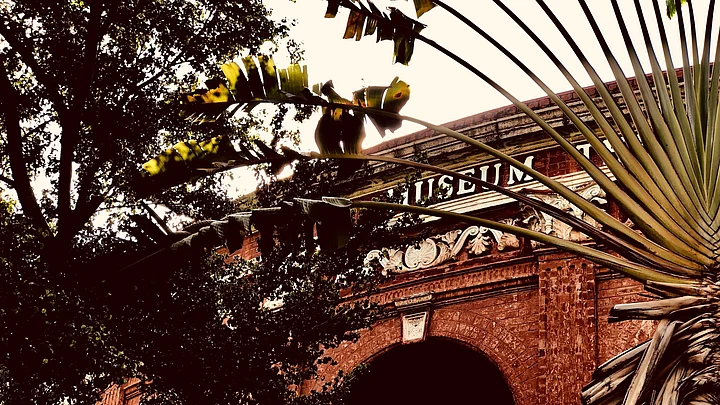The Egmore Museum (aka Madras Museum) is the second oldest in the country, started in 1851, fifty-six years after the Indian Museum in Kolkata. It has survived the pre-Independence era, successive governments and prolonged spells of apathy.
In 2018, as part of an Asian Development Bank-funded scheme, the museum was given a face-lift at an approved budget of 11.7 crore rupees. The galleries now have elevators, motorised stairway chairs, touchscreen interactive kiosks and more.
Yet, the building itself is falling apart. The walls are crumbling in a number of places. The wooden stands over which the exhibits are placed, are either damp or burrowed in. Many exhibits are exposed to the elements, or have gathered dust due to a lack of maintenance. Some, like the silk cloth section, are disintegrating.
Here are some telling photos of the beauty, and the decay which is on display at the museum.
Month-Long Power Outage
Owing to maintenance work, the museum has had a power shutdown for over three weeks as of today (20 August, 2019). It is expected to last another month. Entire sections have been cordoned off; while others are dark and damp in the absence of much-needed light and air conditioning.
The Geology section is one of the most modernised, with a motorised Tyrannosaurus-Rex model and touchscreen kiosks. The strain of additional equipment, fittings and other efforts to bring the section ‘up-to-date’ have begun to show on the structure of the building.
Crumbling Architecture
The dilemma of modernising a museum housed in a historic building is clear and present, and in plain sight at the Egmore museum. The upkeep of the exhibits is limited greatly by the need to retain the original structure of the building. The additional electronics — air conditioning, lighting, touchscreen kiosks — all have taken a toll on the structure of the building itself.
Exposed to the Elements
The museum itself was built by Namberuman Chetty, and designed by Henry Irwin. The interiors, especially the entrance, resemble the Bank of Madras (SBI). It is sprawled over 43 acres of lush landscaped land. With tickets being sold at Rs 10 per adult, Rs 5 per child, and Rs 200 for foreigners, the collections are grossly inadequate to maintain the premises.
In the absence of trained guides, most of the visitors simply rush through entire sections with no reference point. The art of sifting through exhibits in a museum, to correlate history with artefact, and form a seamless narrative, is lost. Most visitors simply search out the blue whale skeleton, or the section on snakes, for the ‘wow’ factor, and move on.
The sculptures of Amaravati, Badami and Mahabalipuram at the museum are exquisite, despite the crumbling setting. Renovations to the museum are expected to be completed by mid 2020. But it is doubtful if some of the exhibits will survive even that long.
